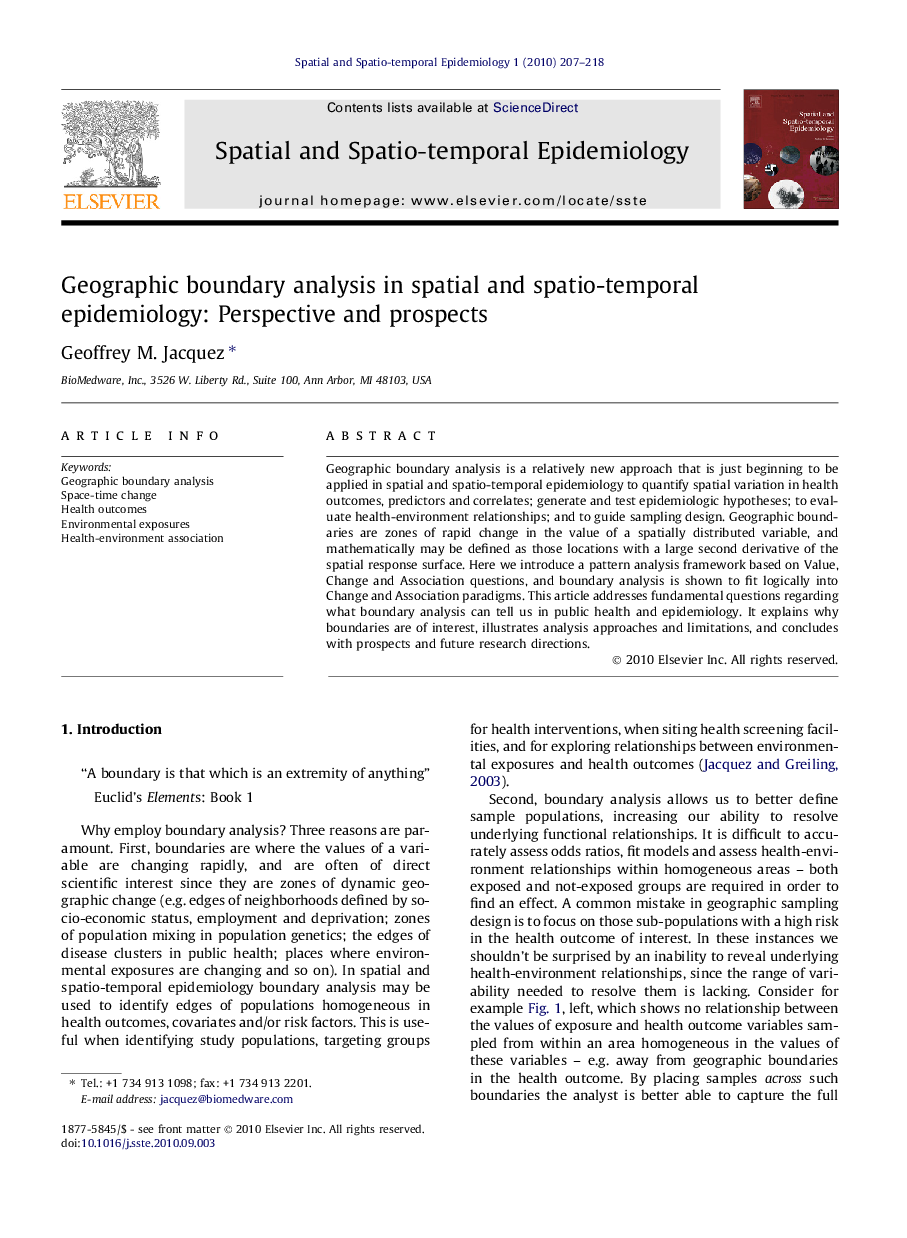| Article ID | Journal | Published Year | Pages | File Type |
|---|---|---|---|---|
| 1064409 | Spatial and Spatio-temporal Epidemiology | 2010 | 12 Pages |
Abstract
Geographic boundary analysis is a relatively new approach that is just beginning to be applied in spatial and spatio-temporal epidemiology to quantify spatial variation in health outcomes, predictors and correlates; generate and test epidemiologic hypotheses; to evaluate health-environment relationships; and to guide sampling design. Geographic boundaries are zones of rapid change in the value of a spatially distributed variable, and mathematically may be defined as those locations with a large second derivative of the spatial response surface. Here we introduce a pattern analysis framework based on Value, Change and Association questions, and boundary analysis is shown to fit logically into Change and Association paradigms. This article addresses fundamental questions regarding what boundary analysis can tell us in public health and epidemiology. It explains why boundaries are of interest, illustrates analysis approaches and limitations, and concludes with prospects and future research directions.
Related Topics
Health Sciences
Medicine and Dentistry
Public Health and Health Policy
Authors
Geoffrey M. Jacquez,
